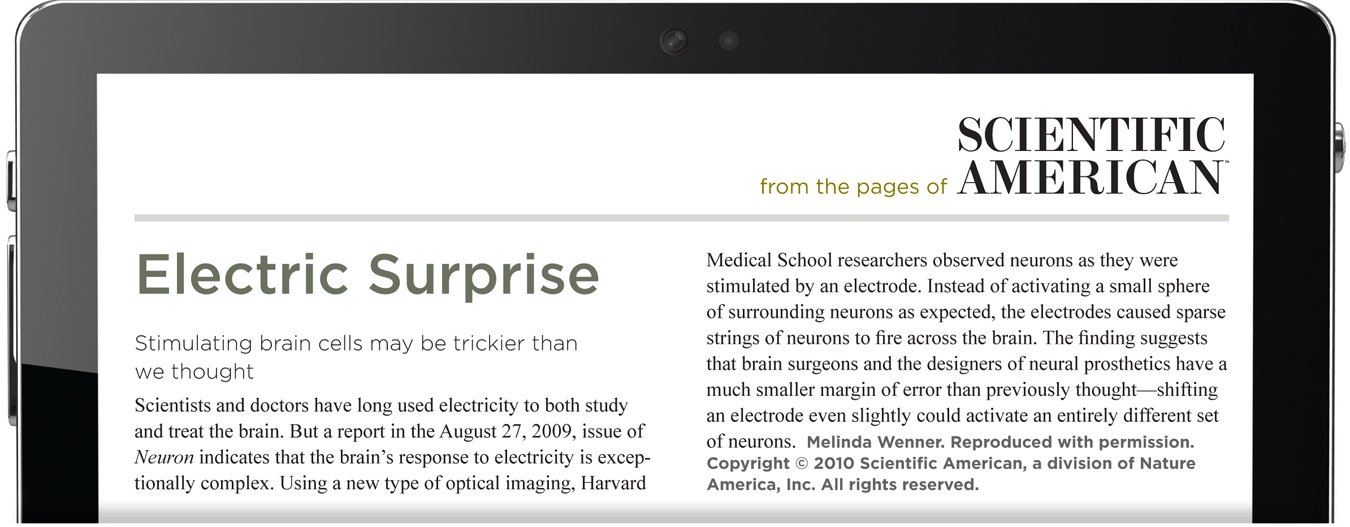Chapter 1. Chapter
Article
From the Pages of Scientific American
Electric Surprise

Click the image to enlarge. Click "Next" to continue.
1.1 Quiz
1. What did researchers expect to happen when they stimulated neurons with an electrode?
| A. |
| B. |
| C. |
| D. |
2. What did researchers actually find when they stimulated neurons with an electrode?
| A. |
| B. |
| C. |
| D. |
3. The Scientific American segment Electric Surprise suggests that the researchers’ findings would be especially important for the work of which groups?
| A. |
| B. |
| C. |
| D. |
4. The Harvard researchers found the unexpected pattern of neural activation through brain imaging. Which of these is NOT a means of seeing brain functioning through imaging?
| A. |
| B. |
| C. |
| D. |
5. It’s easy for researchers to use electrodes to activate neurons, because neurons naturally generate spikes of electrical energy. The spike is called the:
| A. |
| B. |
| C. |
| D. |